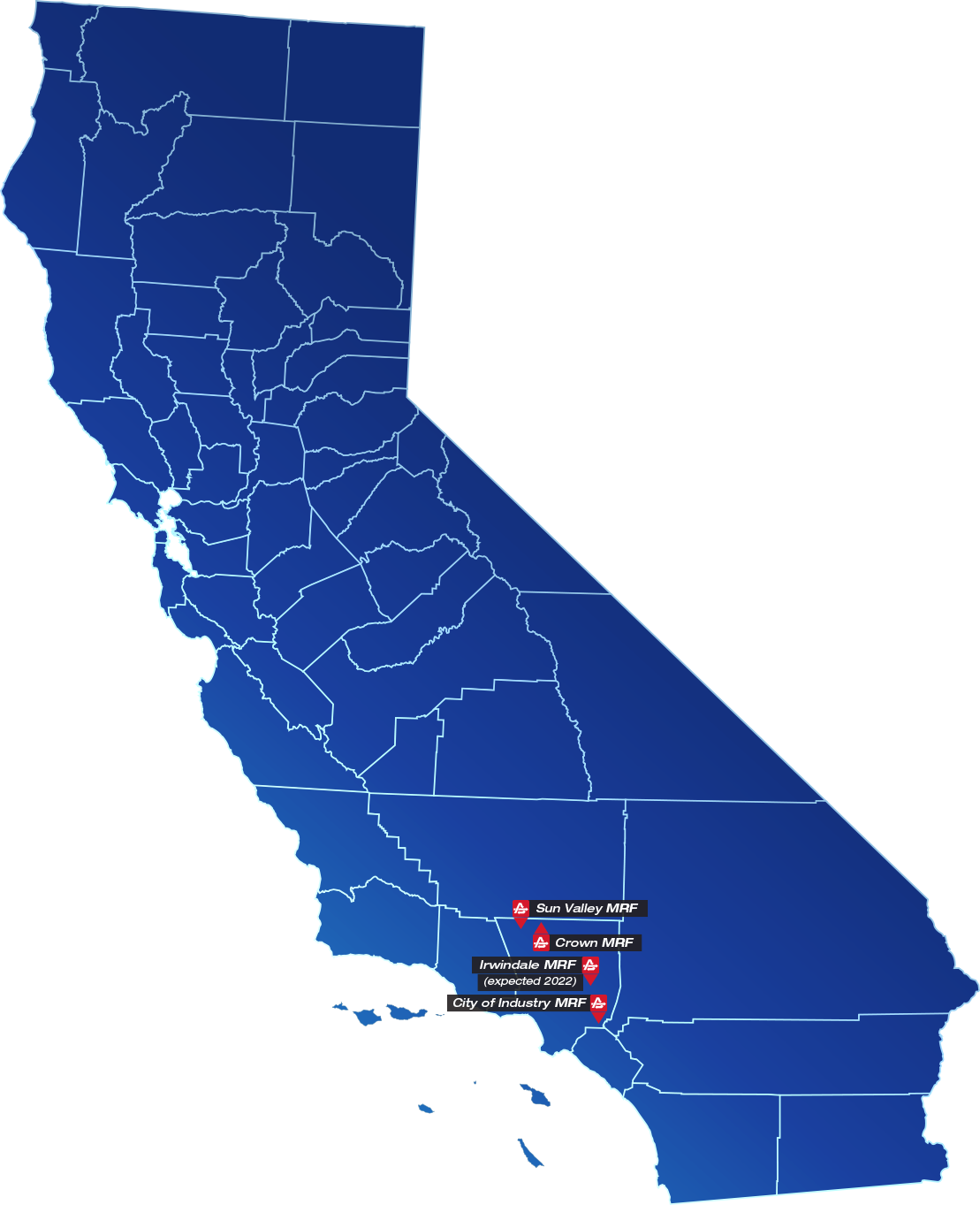![]()
Athens’ Sun Valley Materials Recovery Facility (MRF) opened its tipping floor to the Los Angeles region in October 2014. Today, it is renowned as one of the most innovative, environmentally friendly, and safest MRFs in the nation.
Every year, visitors from around the world tour the facility to catch a glimpse of its innovations, such as robotic sorters, artificial intelligence, and the latest in energy-efficient environmental controls available in the industry.
Now, Athens is providing an online glimpse at the inner workings of this amazing facility. Starting with the scale house and working our way through the baler, each point of interest has state-of-the-art features designed to maximize recyclables recovery and landfill avoidance.
The scale house is the first step for waste collection vehicles dumping at the facility. Underground digital scales help keep traffic moving and keep drivers safe in the cab of their truck. Each scale is equipped with radio frequency identification (RFID) technology.
The scale house is the first step for collection vehicles dumping at the facility. Underground digital scales help keep traffic moving and keep drivers safe in the cab of their truck. Each scale is equipped with radio frequency identification (RFID) technology. The RFID communicates and records load weights and can detect harmful radioactive material without exposure to MRF staff.
Benefits:
Once the collection vehicle enters the facility through the fast-action doors, the driver offloads the recyclables load onto the enclosed tipping floor. Spotters wearing personal protective equipment direct traffic to designated material presorting areas for a visual inspection.
Benefits:
Recyclable material is loaded from the tipping floor and fed into the presort system. The first step is the bag breaker, which uses counter-rotating drums to open plastic bags and release the contents efficiently. Plastic bags can damage MRF equipment and even shut down the recycling operations. Pre-sorters then remove any large and bulky items that may damage equipment or cause an injury.
Benefits:
After presorting, recyclable material enters a separator that sorts old corrugated cardboard (OCC) from other recyclables. Cardboard surfs over the screen while smaller items fall below a debris roll screen for further sorting. Cardboard is highly sought after because it is a highly recyclable material.
Benefits:
NIHOT recycling technology uses a single-drum separator to sort material based on density by using air blowers and a rotating drum. Large materials such as large plastics, fiber, and containers are recovered for recycling. Heavier items such as books, balls, etc., drop through.
Benefits:
Recyclable paper, also known as fiber material, is sorted and gets a final check by manual sorters. This step ensures that only highly recyclable fibers move on in the process. Contaminated fibers such as wet paper and other soiled fibers are sorted out of the recycling stream. Only the cleanest and high-quality fibers are recovered for recycling.
Benefits:
In one of the final stages of the MRF sorting system, a powerful magnet recovers recyclable metals. Optical sorters use infrared systems and light sources to identify materials rapidly based on the unique polymer “signature” from their infrared spectra. They target metals, aluminum, PET, PP5, HDPE, and mixed plastics. This is one of the most advanced mixed materials container lines in the United States.
Benefits:
The Sun Valley MRF was the first to use artificial intelligence to recover recycables. MAX-AI was the first artificial intelligence system utilized in the recovery of recyclables application in the United States. Through machine learning technology, Max-AI employs multi-layered neural networks, along with a vision system, to “see” and identify objects similar to the way a person does. The technology drives improvements in operational efficiency, recovery, system optimization, maintenance, and more.
Prior to MAX-AI, this stage in the sorting process was done manually with a high risk of injury.
Benefits:
Once recyclable materials have moved through the entire sorting system they are ready to be turned into a new recycled product. First, the material must be prepared for shipping. Sun Valley MRF uses a baler equipped with two 100-horsepower engines to compress 1,500 pounds of recyclable material into a block, roughly the size of a couch.
The Sun Valley MRF produces 15 different types of bales from recyclable materials. Every day, the MRF ships roughly 200 bales to manufacturers that turn the recyclables into new products.
Benefits:
The Sun Valley MRF provides recyclables recovery service to dozens of communities in the Los Angeles Area. Combining innovation and safety culture, the MRF has been able to help these communities remain in compliance with state mandates, while fostering a safer and healthier environment. Athens Services is has invested millions of dollars into its recycling infrastructure to support a more sustainable environment and to help cities meet their zero-waste goals.

Copyright (C) 2025 Athens Services. All Rights Reserved.